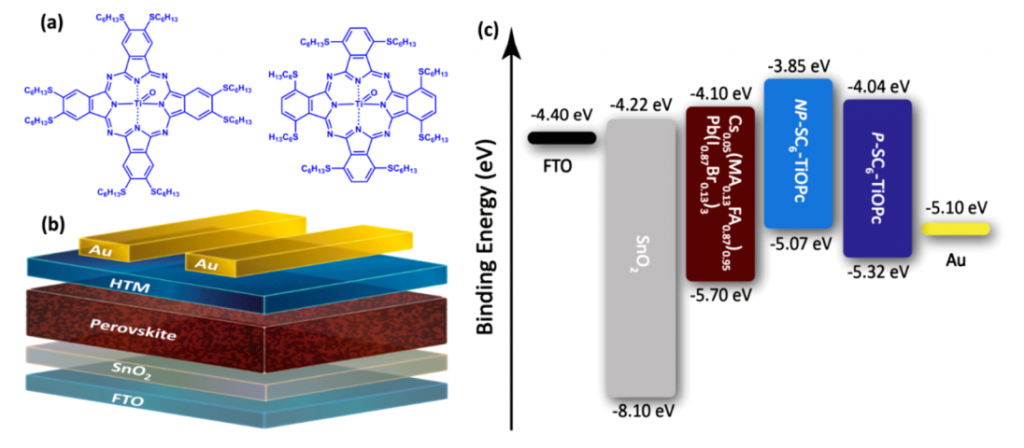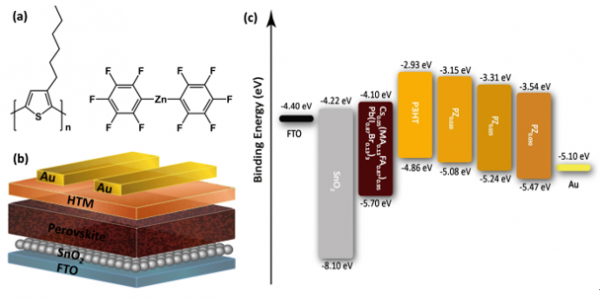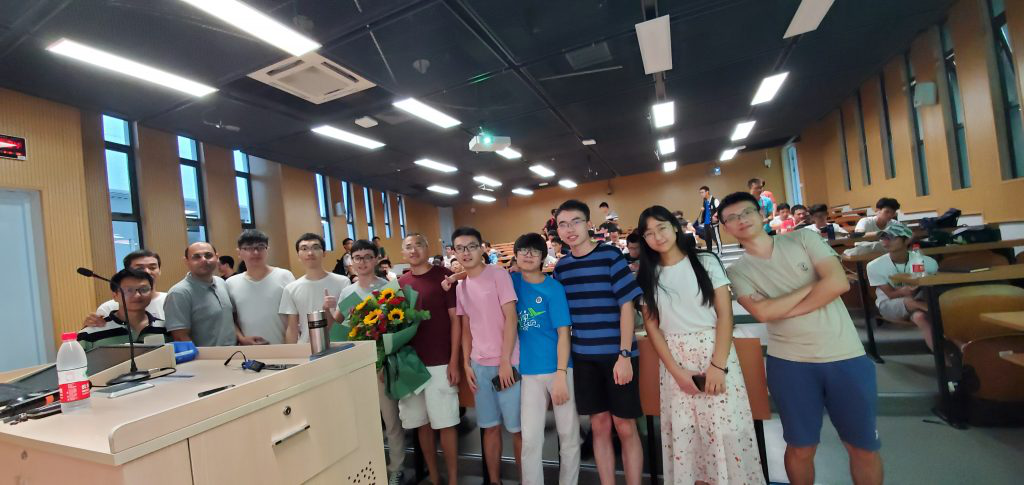SUSTech chemistry undergraduate students shine light on perovskite solar cells in published research
2019-10-31
With research into solar cells booming across the world, it has become critical to find new and innovative ways to maximize their efficiency in commercially viable ways. Improving their ability to convert sunlight into energy is vital to improving their effectiveness for society.
In recent months, Class of 2020 undergraduate student Mr. Qikun Hu from Professor Xu Zongxiang’s research group in the Department of Chemistry at Southern University of Science and Technology (SUSTech) has published two papers in top journals ACS Applied Materials & Interfaces (IF = 8.456) and Wiley’s Solar RRL, in which both papers examined hole transporting materials used in the conversion of sunlight into electricity within perovskite solar cells.
The paper published in ACS Applied Materials & Interfaces (ACS Appl. Mater. Interfaces) was titled “Molecular Design Strategy in Developing Titanyl Phthalocyanines as Dopant-Free Hole-Transporting Materials for Perovskite Solar Cells: Peripheral or Nonperipheral Substituents?”
It is easy to synthesize and purify the metal phthalocyanine material (an organic compound), and maintains both strong molecular regularity and high stability. It has also proved itself to be an excellent material for semiconductors, as represented by its use in a variety of organic photoelectric devices. Research has shown that the location of potential functional groups (substituents) is extremely important when it comes to determining the optical and electrical properties of the organic compound, as well as its ordered state. Non-peripheral substituents allow for greater absorption of light across the spectrum, while having a larger impact on the electrical properties on the phthalocyanine. This results in a greater impact on a device’s performance.

With that in mind, the research group compared two different titanium phthalocyanine materials, using different substituent positions (peripheral and non-peripheral). It was found that the peripheral substituents created smaller planar molecular structures, which allowed for an increased number of molecules to be stacked in any particular space. The researchers also found that the non-peripherally substituents provided more ordered molecules, while also generating better films for carrier transporting of perovskite solar cell.
When using as hole transporting layer of perovskite solar cell, the researchers determined that the non-peripheral substituted phthalocyanine is better at converting sunlight to electrical energy and minimizing heat loss through interfacial carrier recombination. Their results have shown a dramatic improvement in photoelectric conversion efficiency, along with increased light, thermal and water-oxygen stability.
SUSTech is the first corresponding author unit. Undergraduate student Mr. Hu Qikun is the first author, with postdoctoral researcher Ehsan Rezaee and doctoral student Li Minzhang as co-authors. Professor Dominic V. McGrath from the University of Arizona and Associate Professor Xu Zongxiang are co-corresponding authors.
The research was supported by Special Funds for the Development of Strategic Emerging Industries in Shenzhen with project funding from the Shenzhen Development and Reform Committee. Work at the University of Arizona was supported as part of the Center for Interface Science: Solar-Electric Materials, an Energy Frontier Research Center funded by the U.S. Department of Energy, Office of Science, Office of Basic Energy Sciences, and the National Science Foundation.
The paper published in Solar RRL was entitled “P3HT with Zn(C6F5)2 as p‐type Dopant for Enhanced Performance of Planar Perovskite Solar Cell.” This follows the research team’s paper in Solar RRL that was published last month. The most common small molecule dopants for hole transport materials are bis (trifluoromethane) sulfoimide and 4-tert-butylpyridine. While these two dopants can improve performance, device stability is greatly reduced due to the good affinity of lithium trifluoromethane for water.

The research team used Zn(C6F5)2 to improve the performance of organic compound poly 3-hexylthiophene (P3HT) while also enhancing device stability. By determining the proper ratio for Zn(C6F5)2, there are statistically significant improvements in the ability of P3HT to convert sunlight into energy and minimize interfacial carrier recombination. The results of the research also indicate a solid foundation for future research into P3HT on perovskite solar cells.
SUSTech is the first communication unit. Undergraduate student Hu Qikun is the first author, with postdoctoral researcher Ehsan Rezaee as the co-first author. Associate Professor Xu Zongxiang was the corresponding authors.





